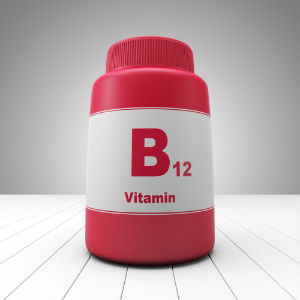New Dr. Group Post! - 4 Facts of Adenosylcobalamin |  |
| Posted: 15 Nov 2014 07:00 AM PST  Adenosylcobalamin is a vitamin on a mission. Without this active form of B12, the human body would cease to produce energy at the cellular level. This would terminate all cellular processes and result in eventual systemic failure and, left untreated, death. Vitamin B12, in all its forms, is that important. What some people don't realize is that B12 is unique in that it's not a plant-based vitamin. Only bacteria create it, making humans completely dependent on these microscopic organisms for survival. Yes, animal foods do contain B12; but, all of these animals receive their B12 from bacterial fermentation in the gut.
Four Facts about AdenosylcobalaminCommon sources of B12 include fish, meat, and dairy products. For anyone unable to digest or absorb the nutrient (which can happen with age), or anyone with dietary restrictions preventing consumption of these foods, supplementation is an absolute necessity. Here's four facts about adenosylcobalamin that will explain its function and efficacy. 1. Adenosylcobalamin is Converted MethylcobalaminDietary sources of B12 come in the form of hydroxocobalamin. Many supplements use the artificial form of B12–cyanocobalamin–because it's cheaper and highly stable. In recent years methylcobalamin, the form of B12 the body uses, has become a popular supplement. Whichever form of B12 is ingested, the body will convert it to methylcobalamin. As a side note, methylcobalamin doesn't require conversion and goes straight to work without any unnecessary energy expenditure. This B12 form flows through the bloodstream and goes to work by protecting the brain, removing toxins, and converting homocysteine to methionine. In further reactions, methionine contributes a methyl-group to create adenosyl, and ultimately adenosylcobalamin. 2. Metabolic Effects of AdenosylcobalaminThe Citric Acid cycle, or Kreb's cycle, is the process by which mitochondria creates ATP, or cellular energy. During this process, adenosylcobalamin must assist in the conversion of methylmalonyl-CoA to succinyl-CoA. Without this process, the Citric Acid cycle fails. This results in cellular damage and potential DNA and RNA damage, setting the stage for degenerative disease. Early symptoms of this issue manifests as fatigue or early aging. 3. How to Determine Adenosylcobalamin DeficiencyHigh levels of Methylmalonic Acid (MMA) in the blood or the urine reflect inadequate adenosylcobalamin levels. One study found people with reported MMA levels of .27 micromoles per liter or higher (.26 or above indicates B12 deficiency) may show higher homocysteine levels, while those at .60 may suffer from neurological issues. [1] [2] Testing for MMA will reveal whether the body is adenosylcobalamin deficient. 4. Supplementing with AdenosylcobalaminAlthough a natural and essential form of B12, adenosylcobalamin isn't the easiest one to supplement with. Unlike cyanocobalamin, it's not stable in pill form and therefore not commonly found as a supplement. Some liquid B12 supplement formulations combine the bioactive coenzyme forms of methylcobalamin and adenosylcobalamin. Supplements like these are ideal for those with an increased risk of B12 deficiency, especially older adults, vegetarians, and vegans. Do you supplement with adenosylcobalamin? Tell us how it's working for you! -Dr. Edward F. Group III, DC, ND, DACBN, DCBCN, DABFM References:
The post 4 Facts of Adenosylcobalamin appeared first on Dr. Group's Natural Health & Organic Living Blog. |
| You are subscribed to email updates from Dr. Group's Healthy Living blog To stop receiving these emails, you may unsubscribe now. | Email delivery powered by Google |
| Google Inc., 1600 Amphitheatre Parkway, Mountain View, CA 94043, United States | |
No comments:
Post a Comment